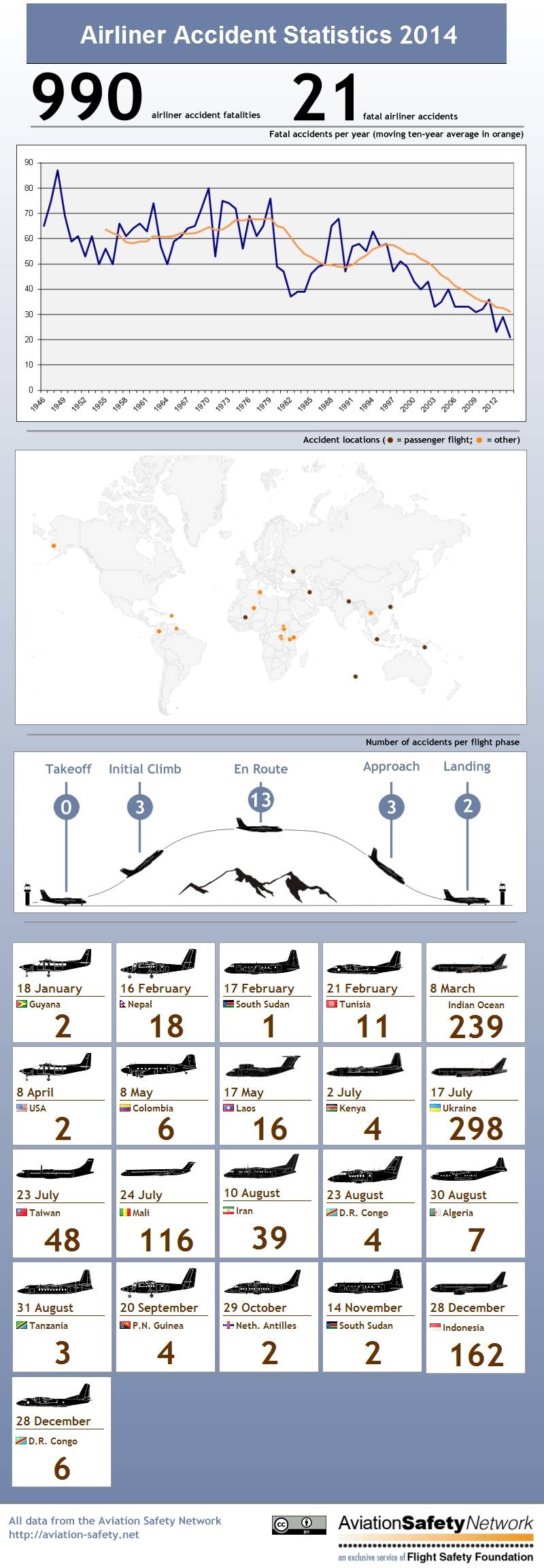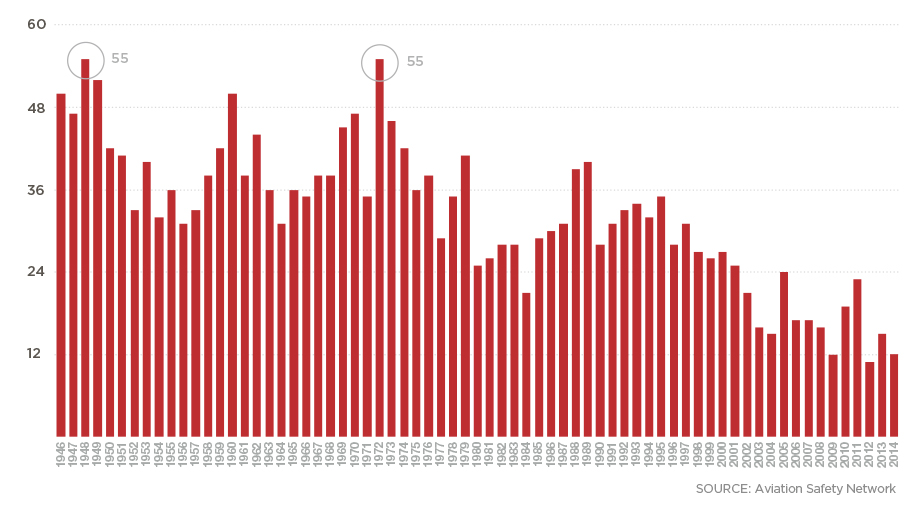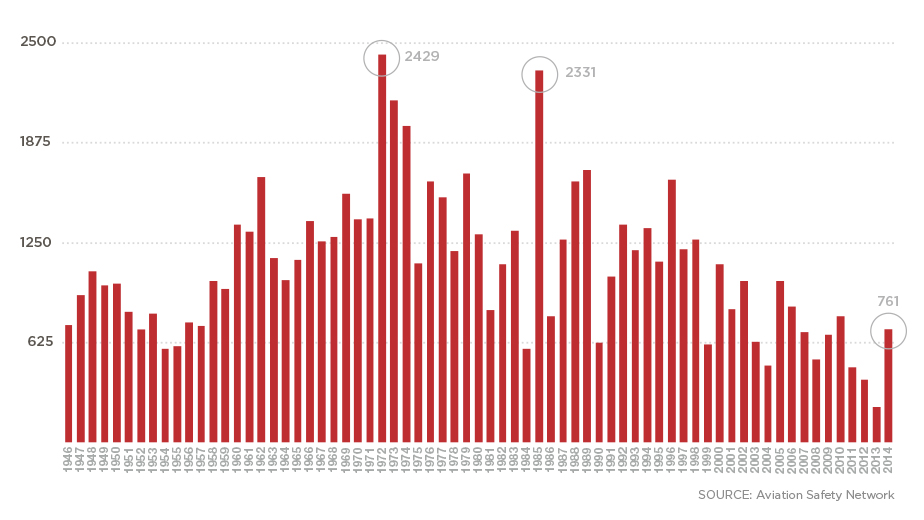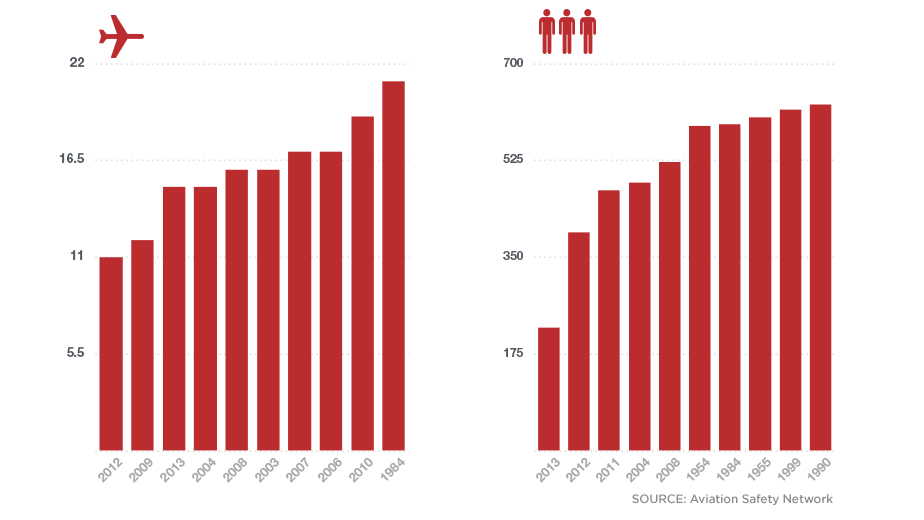Have There Been More Plane Crashes Lately, Or Does It Just Feels So?
The last 15 months has seen a series of high profile air crashes.
On 24 March, after a German flight crashed in the French Alps, killing all 150 people onboard, several netizens took to Twitter to express their condolances and wondered whether plane crashes have become common in recent times. It was, after all, the fifth crash in just over a year to result in more than 100 fatalities.
Waking up to a plane crash news is becoming all too common. All the best to the families of the passengers. #Germanwings.
— Shakib Arsalaan (@ShakibArsalaan) March 24, 2015
Gutted to hear about another plane crash... Can't believe this thing is becoming so common nowadays! :/ #Germanwings
— Danesh Thiagarajah (@danesh9) March 24, 2015
While planes are considered the safest mode of transport, with the disappearance of MH370 in March 2014, including the shot-down MH17 in July and various other crashes making headlines, it feels like the last 15 months has seen more plane crashes than ever.
However, on the contrary, 2014 was actually the safest on record for total number of crashes, according to the Aviation Safety Network (ASN). There were a total of 21 crashes in 2014, including MH370, which has yet to be found but is presumed to have crashed over the Indian Ocean. 21 is the lowest number of commercial plane crashes since at least 1946, the Slate reported citing a ASN infographic.
However, as Bustle notes, common consensus will likely tell you that 2014 was not a good year for flying, especially on MAS. Since vanishing on 8 March 2014, MH370 has become one of the most perplexing mysteries in recent history, as no hint of the plane has been found to this day, despite exhaustive searches. The 227 passengers and 12 crew members are all presumed dead.
Then, just four months later, Flight MH17 was shot down by pro-Russian separatists near the Ukrainian-Russian border. None of the 298 people onboard survived. That same week, another TransAsia Airways flight went down, killing 48 people in Taiwan, and Air Algerie Flight 5017 crashed in Mali, killing all 116 people onboard. And right before the year ended, Air Asia Flight QZ8501 went down the Java Sea off Borneo, killing all 162 people onboard.
The mystifying nature of Flight MH370, the violence behind MH17, and the timing of the other two flights have all contributed to major headlines and a frenzied public discourse about the safety of flying. However, the extreme circumstances of these tragic incidents does not mean that there were more crashes in 2014 than ever before, even if it feels that way.
bustle.comWhile air travelers might be concerned about the global aviation safety net, and may wonder if, statistically, the skies are getting more dangerous. However, it isn't so. Just look carefully at the big picture. In the last 70 years, there were numerous years that saw far greater commercial plane crashes and deaths.
Meanwhile, "the six reported fatal commercial crashes since the start of the year would put 2015 on pace to surpass the 2014 number of total crashes, and at least 236 people have reportedly died so far in plane crashes this year. If those numbers were to continue at a similar rate, 2015 would also surpass 2014 in fatalities.
The thing to remember about these incidents, however, is that while the risk of dying in a plane crash seems to be on the rise in the past 15 months, it is still vanishingly small and actually an improvement on historic records," reports the Slate.
Prior to 2002 the number of deaths in commercial flight accidents, hijackings, or acts of sabotage exceeded 1,000 in every year but two going back to 1987, according to numbers provided by ASN. The downward trend—both in fatalities and overall number of crashes—is a recent one, with the world averaging 731 deaths and 31 commercial crashes per year in the past 10 years and 1,118 deaths and 45 crashes in the 10 years prior to that.
If you look at crashes per number of flights as estimated by the International Civil Aviation Organization, 0.0001 percent of flights have crashed in the past 10, years resulting in one death for every 38,549 flights.
Because 2014 was particularly deadly, it resulted in slightly more fatalities, with one death every 33,333 flights despite a record number of departures. But the percentage of flights that crashed actually shrunk nearly in half from the 10-year average to 0.00006 percent.
The public perception of flying since the start of 2014 has potentially been skewed by a number of particularly terrifying high-profile crashes, including the Malaysia Air flight that disappeared last March killing 239, the Malaysian Air flight that was shot down over the Ukraine last summer carrying 298 people, an Air Algérie flight that crashed in Mali last summer, killing 116, an Indonesia AirAsia flight that crashed in December, killing 162, a dramatic TransAsia Airways runway crash that killed 43 people last month and was captured on tape and posted all over Twitter, and Tuesday’s disaster in France.
If you look back as recently as 2013, the highest-total-fatality accident that year was a Russian crash that killed 50, according to the Aviation Safety Network. In the three years prior to 2014, only two crashes resulted in more than 100 fatalities. But in 2010, the year prior to that relatively safe-appearing three-year period, there were three crashes with 100 or more fatalities and five with 90 or more, so the spate of high-fatality crashes is really not that much of an anomaly even when compared with the relatively safe recent past.
The safest years since 1946 have 11 to 21 accidents per year and 224 to 627 annual deaths. So is that the best we can expect from the global aviation safety net?
While it's not attainable to have absolutely zero accidents, there's always work to do in safety. We can always improve.
Experts attribute the impressive recent safety record to improved technology, better communication and smarter procedures and management systems.
Flight deck alarms alert pilots of oncoming traffic or that their planes are approaching the ground. The technology has “saved more lives than we'll ever know,” Quevedo said. It's difficult to factor in disasters like Malaysia Airlines Flight 17, Quevedo said, because so little is known about the safety-related decisions surrounding it, and obviously, commercial aircraft are not designed to fend off missile attacks.
Overall, the global safety system “is quite stable,” Quevedo said, and a string of three crashes within a week doesn't indicate otherwise. “The glory of the air transport industry,” Charlton said, “is that when something goes wrong, we work incredibly hard to work out what went wrong and make sure it doesn't happen again.”




